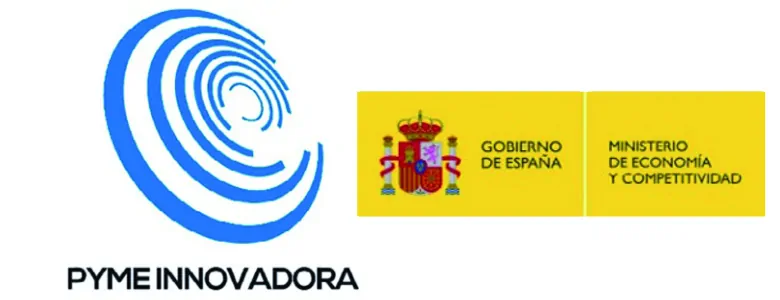
HORIZON EUROPE

 Europeo
Europeo
Specific Challenge:Detection and monitoring of cell and tissue transplants in vivo is of utmost importance for development of clinical cell therapy. Suitable nanotechnology-based imaging approaches with high sensitivity should allow for monitoring of cell viability, engraftment and distribution, also through the use of nanomaterials for cells marking. Appropriate imaging techniques have been developed for application in small animals, but are not available yet for use in preclinical large animal models and patients. In particular, such technologies will represent an important safety measure enabling early detection of cell based therapy.
Scope:Proposals should focus on the following:
Development of highly sensitive imaging approaches enabling discrimination of living cell and tissue transplants based e.g. on optical imaging, magnetic resonance imaging and / or nuclear medicine techniques; Monitoring should be highly sensitive, in best case allowing for detection of single cells and cell morphologies; Possibility of non-invasive whole body monitoring (magnetic, optical) in large animals; Development of clinically applicable imaging approaches, t...
ver más
Specific Challenge:Detection and monitoring of cell and tissue transplants in vivo is of utmost importance for development of clinical cell therapy. Suitable nanotechnology-based imaging approaches with high sensitivity should allow for monitoring of cell viability, engraftment and distribution, also through the use of nanomaterials for cells marking. Appropriate imaging techniques have been developed for application in small animals, but are not available yet for use in preclinical large animal models and patients. In particular, such technologies will represent an important safety measure enabling early detection of cell based therapy.
Scope:Proposals should focus on the following:
Development of highly sensitive imaging approaches enabling discrimination of living cell and tissue transplants based e.g. on optical imaging, magnetic resonance imaging and / or nuclear medicine techniques; Monitoring should be highly sensitive, in best case allowing for detection of single cells and cell morphologies; Possibility of non-invasive whole body monitoring (magnetic, optical) in large animals; Development of clinically applicable imaging approaches, taking into account medical regulatory aspects; Interpretation of the data with theoretical models (to be developed if necessary). As relevant, the proposed activities should address sex and gender specific aspects[1].
Activities are expected to commence at Technology Readiness Levels 3/4 and reach 5/6.
The Commission considers that proposals requesting a contribution from the EU between EUR 5 and 7 million would allow this specific challenge to be addressed appropriately. Nonetheless, this does not preclude submission and selection of proposals requesting other amounts.
Expected Impact: Availability of novel highly sensitive nanotechnology-based imaging approaches allowing for monitoring of survival, engraftment, proliferation, function and whole body distribution of cellular transplants in preclinical large animal models and patients; Imaging technologies facilitating the provision of new regenerative therapies to patients; Opening of a new market sector for imaging equipment and supplies, reinforcement of the European healthcare supply chain and improvement of the competitiveness of the European healthcare sector. Proposals should include a business case and exploitation strategy, as outlined in the Introduction to the LEIT part of this Work Programme.
Cross-cutting Priorities:Gender
[1]See definition of the 'gender dimension approach' in the introduction of this Work Programme part.
ver menos
Características del consorcio
 :
La ayuda es de ámbito europeo, puede aplicar a esta linea cualquier empresa que forme parte de la Comunidad Europea.
:
La ayuda es de ámbito europeo, puede aplicar a esta linea cualquier empresa que forme parte de la Comunidad Europea.
Características del Proyecto
Los costes de personal subvencionables cubren las horas de trabajo efectivo de las personas directamente dedicadas a la ejecución de la acción. Los propietarios de pequeñas y medianas empresas que no perciban salario y otras personas físicas que no perciban salario podrán imputar los costes de personal sobre la base de una escala de costes unitarios
Los otros costes directos se dividen en los siguientes apartados: Viajes, amortizaciones, equipamiento y otros bienes y servicios. Se financia la amortización de equipos, permitiendo incluir la amortización de equipos adquiridos antes del proyecto si se registra durante su ejecución. En el apartado de otros bienes y servicios se incluyen los diferentes bienes y servicios comprados por los beneficiarios a proveedores externos para poder llevar a cabo sus tareas
La subcontratación en ayudas europeas no debe tratarse del core de actividades de I+D del proyecto. El contratista debe ser seleccionado por el beneficiario de acuerdo con el principio de mejor relación calidad-precio bajo las condiciones de transparencia e igualdad (en ningún caso consistirá en solicitar menos de 3 ofertas). En el caso de entidades públicas, para la subcontratación se deberán de seguir las leyes que rijan en el país al que pertenezca el contratante
Características de la financiación
LIST OF COUNTRIES and APPLICABLE RULES FOR FUNDING
described in part A of the General Annexes of the General Work Programme.
Note also that a number of non-EU/non-Associated Countries that are not automatically eligible for funding have made specific provisions for making funding available for their participants in Horizon 2020 projects (follow the links to Australia, Brazil, Canada, China, Hong Kong &Macau, India, Japan, Republic of Korea, Mexico, Russia, Taiwan).
ELIGIBILITY and ADMISSIBILITY CONDITIONS
described in part B and C of the General Annexes of the General Work Programme.
Proposal page limits and layout: Please refer to Part B of the standard proposal template.
EVALUATION
3.1 Evaluation criteria and procedure, scoring and threshold:
The criteria, scoring and threshold are described in General Annex H of the work programme.
The following exceptions apply:
For single-stage and second-stage evaluations, the threshold for the criteria Excellence and Impact will be 4. The overall threshold, applying to the sum of the three individual scores, will be 12.
The procedure for setting a priority order for proposals with the same score is given in General Annex H of the work programme. The following exceptions apply:
Under 3 (a)
Proposals are first ranked... Please read carefully all provisions below before the preparation of your application.
LIST OF COUNTRIES and APPLICABLE RULES FOR FUNDING
described in part A of the General Annexes of the General Work Programme.
Note also that a number of non-EU/non-Associated Countries that are not automatically eligible for funding have made specific provisions for making funding available for their participants in Horizon 2020 projects (follow the links to Australia, Brazil, Canada, China, Hong Kong &Macau, India, Japan, Republic of Korea, Mexico, Russia, Taiwan).
ELIGIBILITY and ADMISSIBILITY CONDITIONS
described in part B and C of the General Annexes of the General Work Programme.
Proposal page limits and layout: Please refer to Part B of the standard proposal template.
EVALUATION
3.1 Evaluation criteria and procedure, scoring and threshold:
The criteria, scoring and threshold are described in General Annex H of the work programme.
The following exceptions apply:
For single-stage and second-stage evaluations, the threshold for the criteria Excellence and Impact will be 4. The overall threshold, applying to the sum of the three individual scores, will be 12.
The procedure for setting a priority order for proposals with the same score is given in General Annex H of the work programme. The following exceptions apply:
Under 3 (a)
Proposals are first ranked in separate lists according to the topics against which they were submitted (‘topic ranked lists’). When comparing ex aequo proposals from different topics, proposals having a higher position in their respective 'topic ranked list' will be considered to have a higher priority in the overall ranked list.
Under 3 (b)
For all topics and types of action, the prioritisation will be done first on the basis of the score for Impact, and then on that for Excellence.
3.2 Submission and evaluation process: Guide to the submission and evaluation process
INDICATIVE TIMETABLE for EVALUATION and GRANT AGREEMENT
Information on the outcome of two-stage evaluation:
For stage 1: maximum 3 months from the deadline for submission.
For stage 2: maximum 5 months from the deadline for submission.
Signature of grant agreements: maximum 8 months from the deadline for submission.
PROVISIONS, PROPOSAL TEMPLATES and EVALUATION FORMS
for the type of action under this topic
Research and Innovation Action:
Specific provisions and funding rates
Standard proposal template
Standard evaluation form
H2020 General MGA -Multi-Beneficiary
Annotated Grant Agreement
ADDITIONAL PROVISIONS
Horizon 2020 budget flexibility
Classified information
Technology readiness levels (TRL) – where a topic description refers to TRL, these definitions apply.
Financial support to Third Parties – where a topic description foresees financial support to Third Parties, these provisions apply.
OPEN ACCESS
Open access must be granted to all scientific publications resulting from Horizon 2020 actions.
Where relevant, proposals should also provide information on how the participants will manage the research data generated and/or collected during the project, such as details on what types of data the project will generate, whether and how this data will be exploited or made accessible for verification and re-use, and how it will be curated and preserved.
Open access to research data
The Open Research Data Pilot has been extended to cover all Horizon 2020 topics for which the submission is opened on 26 July 2016 or later. Projects funded under this topic will therefore by default provide open access to the research data they generate, except if they decide to opt-out under the conditions described in annex L of the Work Programme. Projects can opt-out at any stage, that is both before and after the grant signature.
Note that the evaluation phase proposals will not be evaluated more favourably because they plan to open or share their data, and will not be penalised for opting out.
Open research data sharing applies to the data needed to validate the results presented in scientific publications. Additionally, projects can choose to make other data available open access and need to describe their approach in a Data Management Plan.
- Projects need to create a Data Management Plan (DMP), except if they opt-out of making their research data open access. A first version of the DMP must be provided as an early deliverable within six months of the project and should be updated during the project as appropriate. The Commission already provides guidance documents, including a template for DMPs.
- Eligibility of costs: costs related to data management and data sharing are eligible for reimbursement during the project duration.
The legal requirements for projects participating in this pilot are in the article 29.3 of the Model Grant Agreement.
ADDITIONAL DOCUMENTS
Legal basis: Horizon 2020 - Regulation of Establishment
Legal basis: Horizon 2020 Rules for Participation
Legal basis: Horizon 2020 Specific Programme
H2020 Work Programme 2016-17: Introduction
H2020 Work Programme 2016-17: Introduction to Leadership in enabling and industrial technologies (LEITs)
H2020 Work Programme 2016-17: Nanotechnologies, advanced materials, advanced manufacturing and processing, biotechnology
H2020 Work Programme 2016-17: Cross-cutting activities (Focus Areas)
H2020 Work Programme 2016-17: Dissemination, Exploitation and Evaluation
H2020 Work Programme 2016-17: General Annexes
Información adicional de la convocatoria
Otras ventajas
Ayudas Similares

| Abierta

| Próximamente

| Abierta

